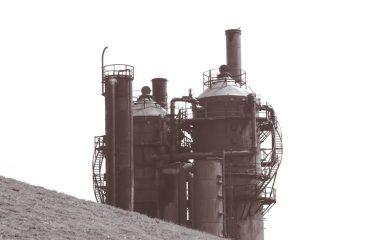In today’s competitive landscape, operational efficiency isn’t just a desirable trait – it’s a necessity for survival. Businesses that can streamline their processes, minimize waste, and maximize output are the ones that thrive. This comprehensive guide will equip you with the knowledge and strategies to significantly improve your operational efficiency, unlocking peak performance and boosting your bottom line.
1. Streamlining Processes: Identifying and Eliminating Bottlenecks
The foundation of improved operational efficiency lies in meticulously analyzing your existing processes. Start by mapping out each step involved in key operations. Look for bottlenecks – points in the process where work slows down or stalls. These bottlenecks often reveal inefficiencies. Common bottlenecks include: lengthy approval processes, inadequate communication channels, insufficient resources, and outdated technology. Once identified, focus on eliminating or mitigating these bottlenecks. This might involve simplifying workflows, delegating tasks effectively, investing in new technology, or improving communication protocols. For example, implementing a project management software can significantly reduce delays and improve team collaboration, thereby eliminating a common bottleneck.
2. Embracing Technology: Automation and Data-Driven Decision Making
Technology plays a pivotal role in enhancing operational efficiency. Automation is key. Many repetitive tasks can be automated using software and tools, freeing up valuable time and resources for more strategic initiatives. Consider implementing Robotic Process Automation (RPA) for tasks like data entry, invoice processing, or customer service responses. Beyond automation, data analytics offer invaluable insights. By collecting and analyzing data from various sources, you can identify trends, predict future needs, and make data-driven decisions that optimize processes and resource allocation. For instance, analyzing sales data can reveal peak demand periods, allowing you to adjust staffing levels accordingly and avoid unnecessary overtime costs.
3. Investing in Employee Training and Development: The Human Capital Advantage
Your employees are your most valuable asset. Investing in their training and development is crucial for boosting operational efficiency. Well-trained employees are more productive, make fewer errors, and are better equipped to handle challenges. Identify skill gaps within your team and develop targeted training programs to address them. This could involve workshops, online courses, or mentorship programs. Empowering employees with the right skills not only improves their individual performance but also fosters a culture of continuous improvement within the organization. Furthermore, providing opportunities for professional growth increases employee engagement and retention, reducing the costs associated with recruiting and training new staff.
4. Optimizing Supply Chain Management: Ensuring Smooth Operations
For many businesses, the supply chain represents a significant area for improvement. Inefficiencies in the supply chain can lead to delays, increased costs, and dissatisfied customers. Optimizing your supply chain involves streamlining procurement processes, improving inventory management, and strengthening relationships with suppliers. Implementing technologies like inventory management software can help you track stock levels in real-time, predict demand, and minimize waste from overstocking or stockouts. Establishing clear communication channels with suppliers ensures timely delivery of materials and prevents disruptions to your operations. Analyzing your supply chain data can also identify areas for cost reduction and improvement in efficiency.
5. Measuring and Monitoring Performance: Continuous Improvement
Improving operational efficiency isn’t a one-time project; it’s an ongoing process. Regularly measuring and monitoring key performance indicators (KPIs) is essential for tracking progress and identifying areas for further improvement. KPIs can include metrics such as production output, defect rates, customer satisfaction, and employee turnover. Establish a system for collecting and analyzing data on these KPIs, and use the insights to inform decisions and make adjustments to your processes. Regular performance reviews and feedback sessions with employees can also help identify challenges and opportunities for improvement. By embracing a culture of continuous improvement, you can ensure that your operational efficiency continues to evolve and adapt to changing business needs.
By implementing these strategies, you can significantly enhance your operational efficiency, leading to increased profitability, improved customer satisfaction, and a more sustainable and competitive business.
SEO-Friendly Tags:
- Operational Efficiency
- Process Optimization
- Workflow Automation
- Business Process Improvement
- Productivity Enhancement




